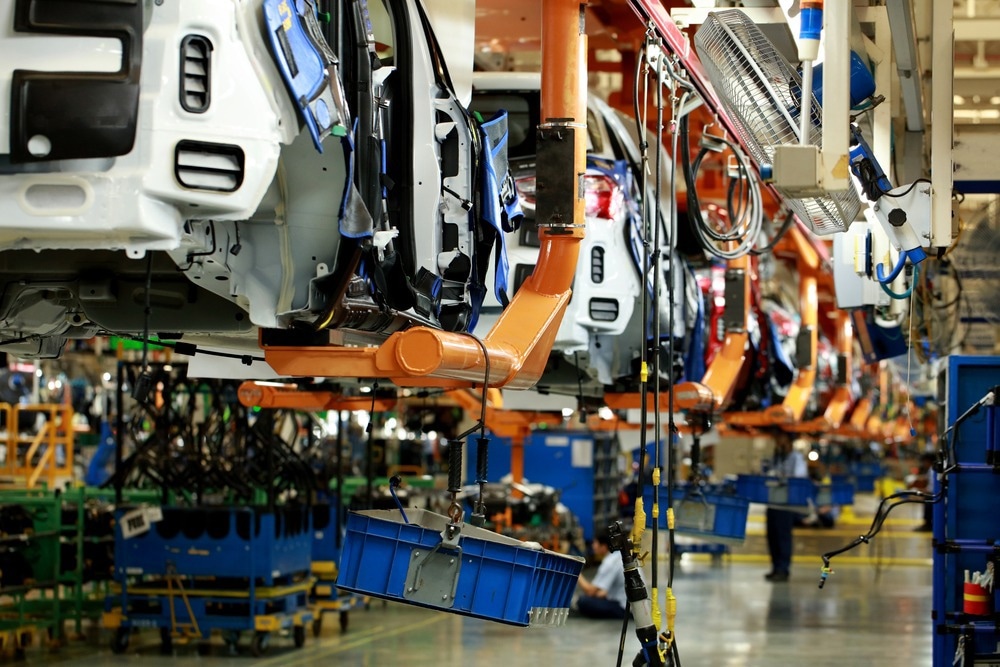The global automotive manufacturing sector is one of the biggest industries worldwide. Each year, 60 million vehicles are produced, which account for roughly 50% of global oil consumption. The industry also employs 4 million people and even more indirectly through the businesses it supports.
Global economic development is dependent on the activities of the automotive industry due to the wide range of businesses that it is integrated with. The automotive industry contributes around 3% of the world’s total GDP output, and that share is higher in emerging markets such as China and India, where the automotive industry accounts for 7% of GDP.
Automotive manufacturing supports three important pillars: industrial development, mobility, and people development. Around the world, automotive manufacturing plants are often surrounded by other manufacturing facilities such as steel plants, component manufacturers, and glass manufacturers - industries that feed into automotive manufacturing. Automotive manufacturing draws in these other industries, developing clusters that lead to new municipalities with the need for infrastructure. Detroit in the USA is a perfect example of how these clusters form into municipalities, as is Guangzhou province in China and Chennai in India.
Automotive manufacturing has also had the impact of revolutionizing mobility. Thanks to access to automotive products, people and goods now move more easily across the globe. This has led to the migration of people and businesses and the establishment and development of suburban areas.
Automotive manufacturing has limited applications outside of the automotive industry. The sole purpose of automotive manufacturing is generally to produce vehicles for commercial, industrial, military and defense, and emergency services.
Hot Topics in Automotive Manufacturing
There are currently two hot topics in automotive manufacturing that are gaining increasing attention around the world. The first is the shift from fossil-fueled vehicles towards electric. Now, more than ever, the world must come together to reduce greenhouse gas emissions and achieve carbon neutrality in order to prevent the irreversible impact of climate change. Given that transportation contributes to over one-third of global carbon dioxide emissions, switching from traditional fossil-fueled vehicles to electric ones has become a key emissions reduction strategy. As a result, car manufacturers have responded and have begun developing innovative zero-emission electric vehicles, with new technology emerging each year.

Image Credit: narai chal/Shutterstock.com
The second big trend currently impacting the automotive manufacturing sector is connected cars. The boom of the Internet of Things (IoT) has driven consumer expectations for connected technologies across the board. The automotive industry refuses to be left behind, and vehicles are emerging with innovative connected features that are both functional and improve the driver and passenger experience. One particular trend in automotive IoT technology is the sharing of digital data and remote diagnostics to produce vehicle health reports and make predictions to prevent breakdowns.
Current Global Market of Automotive Manufacturing
The current global market for Automotive Manufacturing was valued at $2.9 trillion in 2022, and it is currently growing at a CAGR of 3.1% following several years of decline where the market dropped by 0.6% between 2017 and 2022. This represented a decline that was faster than the decline of the overall economy, which was hit by the Covid-19 pandemic. The industry is predicted to continue growing at a CAGR of 3.71% between 2020 to 2030, and will consist of 122.83 million units by the end of the decade, representing a significant leap from 2020’s 85.32 million units. Currently, the automotive manufacturing industry is ranked 1st out of all global manufacturing industries in terms of market size.
The market is segmented by vehicle types into the principal categories of electric vehicles, hybrid-electric vehicles, plug-in hybrid electric vehicles, mild-hybrid electric vehicles, natural gas vehicles, fuel cell electric vehicles, diesel, and petrol. While the world is shifting towards cleaner energy, diesel and petrol vehicles will remain important at least until the end of the decade.

Image Credit: Gorodenkoff/Shutterstock.com
China and the US are the world’s top producers of vehicles, and some of the industry’s key players include Toyota Motor Corp., Volkswagen AG, Daimler AG, Ford Motor Co., Honda Motor Co. Ltd., Bayerische Motoren Werke AG, General Motors Co., Fiat Chrysler Automobiles NV, Hyundai, and Nissan.
Future Directions of Automotive Manufacturing
Global economies currently face dramatic changes. Digitization, innovative technology, and novel business models are causing profound shifts in all industries including automotive manufacturing. These factors are driving four disruptive trends in automotive manufacturing: diverse mobility, autonomous driving, electrification, and connectivity, which will shape the way the industry evolves over the next decade.
This shift will bring about several changes in the industry. There will be a shift towards shared mobility, with predictions that one out of ten cars sold in 2030 being put to use as a shared vehicle. Despite this trend for sharing vehicles, vehicle unit sales will continue to grow but at a reduced rate than in previous years.
It is also predicted that by the end of the decade, around 15% of all new cars sold will be fully autonomous. First, however, the industry must overcome technological and regulatory issues that are currently acting as barriers.
The rise of electric vehicles will also certainly impact automotive manufacturers, who will need to adapt their processes to produce these vehicles. The shift toward electric, while it is being propelled by the urgent need to meet climate change goals, will not be instant, and manufacturers will likely make the shift to electric vehicle production in stages.
Final Thoughts
The automotive manufacturing sector is one of the world’s most important industries, generating trillions in revenue and influencing global economies. In the coming years, the industry will have to respond to the demands of climate goals, as well as the growing trend towards vehicle sharing and the demand for integrated IoT technology.
More from AZoM: The Global 3D Printing Market - Growth, Trends, and Applications
References and Further Reading
Global Automotive Market Analysis and Outlook to 2030: Electric, Hybrid Electric, Plug-In Hybrid Electric, Mild Hybrid, Natural Gas, Fuel Cell Electric, Diesel, Petrol [online]. Yahoo Finance. Available from: https://finance.yahoo.com/news/global-automotive-market-analysis-outlook-100300546.html (Last accessed November 2022)
Global Car & Automobile Manufacturing - Market Size 2005–2028 [online]. Ibis World. Available from: https://www.ibisworld.com/global/market-size/global-car-automobile-manufacturing/ (Last accessed November 2022)
Trends Shaping The Auto Industry In 2023 [online]. Linchpin SEO. Available from: https://linchpinseo.com/automotive-industry-trends/ (Last accessed November 2022)
Von Paul Gao, Hans-Werner Kaas, Detlev Mohr und Dominik Wee. Automotive revolution – perspective towards 2030 [online]. McKinsey. Available from: https://www.mckinsey.com/industries/automotive-and-assembly/our-insights/disruptive-trends-that-will-transform-the-auto-industry/de-DE (Last accessed November)
Disclaimer: The views expressed here are those of the author expressed in their private capacity and do not necessarily represent the views of AZoM.com Limited T/A AZoNetwork the owner and operator of this website. This disclaimer forms part of the Terms and conditions of use of this website.